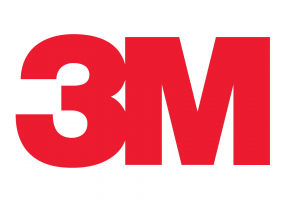Industry slowed but still creates vacancies; external trade reaches new highs
8.11.2016Company: Amcham
September’s statistics printed mixed results. While the external trade showed a record high surplus, industrial production slowed notably. Despite today’s disappointment, the figures reveal that the Czech economy is still in good shape. The labour office’s data confirmed this as it showed a smaller number of unemployed Czechs.
Industrial production increased only 2.7%. The sector of motor vehicles and other transport equipment printed double-digit growth. These two segments secured 2.4pp of overall expansion. Thus, it is apparent that other sectors are not doing so well. The manufacture of machinery also recorded a decent increase of 4.3%. Most other parts of industry remained more or less stagnant. Mining recorded a double-digit decline. It is thus clear that industrial production growth is not balanced and that most industries lag behind the automotive sector.
New order statistics indicate demand for Czech industrial products stems from abroad. Overall orders increased 2.7%, while orders from abroad surged 5.2% and domestic orders declined 3.1%. These statistics also confirm demand for cars and machinery equipment.
Rising domestic demand is evident in external trade figures. In September, it recorded its higher figure ever for that month, amounting to CZK 21.0bn. This represents a CZK 5bn yoy increase. It is surprising that the increase was not created by car exports, which grew only CZK 0.1bn yoy, but was spread across almost all sectors. Lower commodity prices helped narrow deficits in the balances of chemical and mineral products. Moreover, imports are impeded by declining domestic investment activity.
Construction continues to print declines. Industry as a whole dropped 7.4% yoy. The main reason is the drop in engineering construction, which slumped 17.8% due especially to low capital expenditures of the central government, and expenditures co-financed with EU funds in particular. Building construction does not show good results, either. It thus seems the problem with Prague’s metropolitan zoning plan persists. Demand for housing remains strong, and this pushes up prices. On average, flats increased roughly 10% yoy.
Finding a suitable work force is a challenge
Growing domestic economic activity still creates new vacancies. October’s labour market data only confirmed this. The performing economy was joined by seasonal effects in October. The share of unemployed thus dropped two ticks to 5.0% as the number of unemployed decreased to 366,000. This is the lowest figure since 2008. Moreover, the labour office has registered 139,000 vacancies, which is the highest number in the past eight years. Although this is good news in the first place, it reveals a structural problem in the economy. There is a problem finding a suitable work force in some sectors, especially industry. Given the current conditions, people do not like to work or are not qualified enough to get work. This creates wage pressure in the economy. Household income thus increases, which translates into increasing dynamics for consumption. Household consumption will be the main growth driver this year.
We expect further expansion of domestic activity. In October, two refineries (Litvinov and Kralupy) that were formerly out of order were restored to full production. This should translate into an acceleration of industrial output and could increase the trade surplus. Continuously growing external demand should ensure Czech economic growth next year, as well. Moreover, domestic investment activity should pick up. On one hand, this would cut from the external trade surplus, but on the other hand it will support industrial production and the potential of the Czech economy. The economic advance will press the unemployment rate down, but it is already approaching its natural floor, so downward movement will remain limited.
Tags: Economics | Finance |







